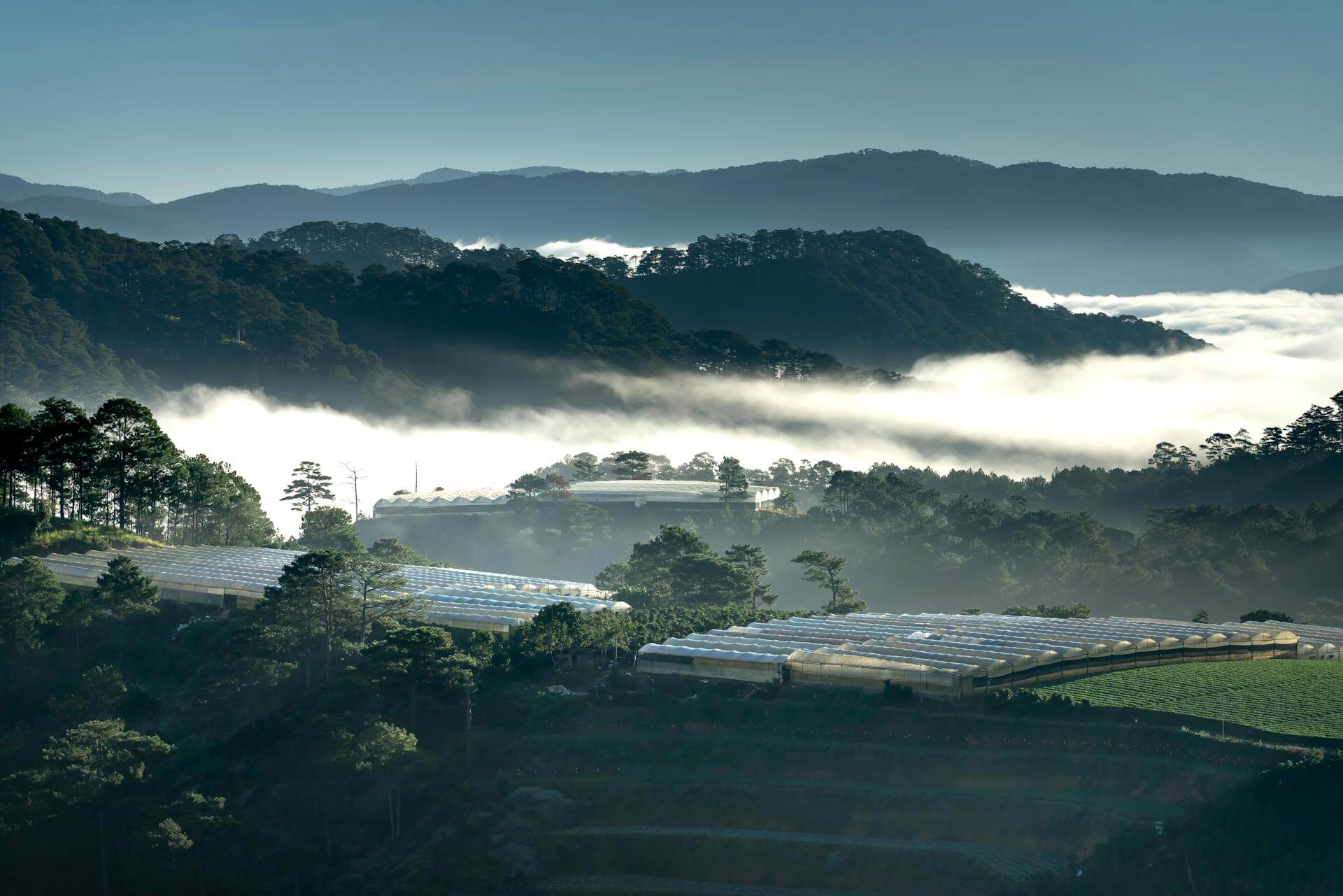There’s a moment—often fleeting, often unphotographed—when you stop being a tourist and start becoming a guest. You’re not chasing landmarks. You’re sipping tea with a grandmother in a lantern-lit alley. You’re invited to a family meal in a fishing village you hadn’t planned to visit. You’ve stumbled into the soul of a place—and in Vietnam, that soul is vast, layered, and generous beyond measure.
This isn’t a travel story. It’s a reflection. A guide. A plea. If you’re planning to visit Vietnam—or even just dreaming of it—this is an invitation to do so with humility, curiosity, and an open heart. Here’s how to connect not just with the scenery or the cuisine, but with the people, the culture, and the quiet, enduring poetry of Vietnamese life.
1. Start with Language: More Than Just “Hello”
Most travelers memorize a few words: xin chào (hello), cảm ơn (thank you), tạm biệt (goodbye). But Vietnamese, like its people, holds layers of intimacy. There are ten ways to say “you” or “I”, depending on age, gender, and social context. Calling someone chị (older sister) instead of bà (grandmother) is not just respectful—it’s humanizing.
Even a small effort at mastering the basics shows that you’re not just here to consume. You’re here to listen. Download a language app. Learn your numbers. Say em chào anh/chị when entering a shop. Mispronounce, laugh, try again. You’re not expected to be fluent—only sincere.
And when you say dạ (a respectful “yes”) to a street vendor or a motorbike mechanic, you might notice a glimmer in their eyes. Not because you got the tone right, but because you tried at all.
2. Dine with Intention: The Table as a Cultural Bridge
Vietnamese food is globally adored, but often misunderstood. It is not just pho and bánh mì—it’s regional, seasonal, and deeply tied to ancestry and balance.
In northern provinces like Hà Giang, the flavors are mild and earthy. In Huế, the former imperial capital, food is delicate and ceremonial. In the south, it bursts with sweetness, color, and an exuberance that mirrors the tropical climate. Each dish is a story; each meal, a form of communion.
Don’t just eat—ask questions. Sit at the tiny blue stools in a back alley quán ăn (local eatery) and ask the vendor who taught them the recipe. If invited to a home meal, notice how rice is shared from a communal bowl, how elders are served first, how silence is as important as speech.
One of the most respectful things you can do in Vietnam is to eat gratefully. Not performatively. Just with reverence.
3. Embrace the Pace: Vietnam is Not a Checklist
There’s a temptation to “see it all”—Ha Long Bay, Hội An, the Mekong Delta, the rice terraces of Sa Pa. But Vietnam resists being reduced to a list. Its magic is not in the postcard views (though they’re stunning). It’s in the slow drip of cà phê sữa đá in a humid afternoon, in a neighbor offering you a lotus seed snack during Tết, in the hum of life in a morning market.
Stay longer in fewer places. Live in a homestay. Rent a motorbike, but let yourself get lost. Don’t be afraid to sit still. Ask for directions not because you’re lost, but because you want to be found—by someone willing to help.
Vietnam isn’t in a rush. You shouldn’t be either.

4. Understand the History: A Land Shaped by Wounds and Wonders
To love Vietnam is to know its resilience. This is a country that has endured colonization, war, and poverty, and yet its spirit remains profoundly open. Not naive. Not without scars. But open.
French colonialism left architecture and baguettes, but also trauma. The American War (as it’s known here) is remembered not with bitterness, but with gravity. Talk to veterans. Visit the War Remnants Museum in Hồ Chí Minh City. Read When Heaven and Earth Changed Places by Le Ly Hayslip or The Sympathizer by Viet Thanh Nguyen. Understand that many stories are still too tender to be shared aloud.
When you walk past a bomb crater in Quảng Trị or an Agent Orange victim selling postcards in Hội An, let it humble you. You are not here to “experience” suffering. You are here to witness with empathy—and to let the resilience of this people reshape your assumptions about strength and healing.
5. Respect Spiritual Spaces: Temples, Ancestors, and the Sacred Everyday
Vietnam is not a deeply religious country in the Western sense, but it is richly spiritual. Buddhism, Taoism, and animism intermingle with ancestor worship and indigenous beliefs. You’ll see shrines in homes, businesses, forests, and caves. You’ll smell incense daily. Death is not feared—it is honored. The dead are not gone—they are hosted.
If you’re invited to a family grave-cleaning ritual or a full-moon offering, accept with reverence. Dress modestly. Observe before acting. Ask questions gently. Remember that even lighting incense is a gesture heavy with meaning.
But even outside temples, the sacred seeps in. A fisherman whispering a prayer to the river. A shopkeeper placing fruit before her ancestral altar. A child bowing at her grandmother’s photograph.
To connect with Vietnam is to recognize that the sacred is not reserved for Sundays—it’s part of the air.
6. Get Outside the Tourist Trail: Village Hearts and Forgotten Paths
While cities like Hanoi and Saigon pulse with creativity and chaos, the soul of Vietnam often resides in its rural veins.
In the northern highlands, ethnic minority villages like those of the H’mong or Dao offer insight into ancient textiles, oral traditions, and resilience in the face of modernization. In the Mekong, floating markets are vanishing, but the river’s rhythm still nourishes entire communities.
Go—but go gently. Choose responsible tour companies. Ask permission before taking photos. Offer your presence, not your pity. The goal is not to romanticize poverty or primitivism, but to encounter dignity in its many forms.
And if you stay in a village, offer to help cook. Help clean. Learn a few local words. Listen to the stories told by a fire or beneath a tin roof. They may be the most important history lessons you’ll ever hear.
7. Be Mindful with Your Camera: Record with Respect
In Vietnam, as everywhere, the camera is both bridge and barrier. Photographs can preserve memory—or flatten humanity into aesthetic.
Before you snap a shot of a street vendor or a monk or a barefoot child, ask: Why this photo? Who benefits? Have I asked for permission?
Sometimes, the most profound moments are the ones you don’t capture. A grandmother’s laugh. A lullaby sung on a sampan. A child handing you a flower for no reason.
Don’t just “take” photos. Let them be part of a conversation, not an extraction. And remember: no image can replace presence.
8. Learn to Listen: The Power of Silence and Story
Vietnamese culture values indirectness. Elders rarely say exactly what they mean. Young people are taught to listen more than speak. Loudness is not authority. Silence is not absence.
As a guest, learn to tune in to what’s beneath the words. The tone. The pause. The side-glance. Sometimes, a smile is an invitation. Sometimes, it’s a shield.
Ask open-ended questions. Wait for answers. Be okay with not understanding everything. Connection doesn’t require fluency. Only willingness.
And if someone tells you a story—especially one about war, loss, or love—hold it with care. These are not tourist attractions. They are soul-gifts.
9. Give Back, But Don’t “Save”
Many travelers want to help. That instinct is good—but it must be guided by humility.
Volunteering in orphanages, building houses, or teaching English may seem noble, but can unintentionally cause harm. Short-term aid often disrupts local economies and undermines local efforts.
Instead, support ethical enterprises. Buy from social businesses like Reaching Out in Hội An or KOTO in Hanoi, which train underprivileged youth. Choose accommodations and tours that give back. Donate to grassroots NGOs run by Vietnamese people, not just foreign charities.
And above all—respect that you are not here to fix Vietnam. You are here to witness its beauty, support its dignity, and let it change you.
10. Leave Only Footprints, Carry New Eyes
Before you leave Vietnam, revisit where you started—not physically, but internally. Are you still a tourist? Or have you become a guest?
Have you learned the names of your hosts? Have you wept at a graveyard? Shared a bowl of rice? Waited out a storm in a stranger’s home?
True connection isn’t loud. It isn’t Instagrammable. It’s in the lingering goodbyes, the scent of fish sauce in your suitcase, the letters you’ll write months later to the woman who taught you to make bánh xèo in the delta.
Vietnam will not give you everything. No country should. But if you arrive with open hands and leave with a full heart, then you’ve done something sacred. You haven’t just traveled. You’ve received hospitality. You’ve accepted the gift of human closeness.
Conclusion: You Were Invited
In Vietnam, there is no word that perfectly matches the English “guest.” The closest is khách, which means visitor, client, guest, or even stranger—depending on context. But when someone calls you khách quý, they mean something more: a valued guest. A bearer of presence. A receiver of trust.
To be a guest in Vietnam is not to be entertained—it’s to be embraced. And to honor that embrace, you must listen, adapt, appreciate, and reciprocate.
So go—by all means, go to Vietnam. Marvel at its landscapes, savor its food, admire its complexity. But more than anything, let yourself be invited into its human fabric.
The doors are open. You need only take off your shoes, bow slightly, and say, xin chào. Em đến rồi. (Hello. I’ve arrived.)
And then, just listen.

